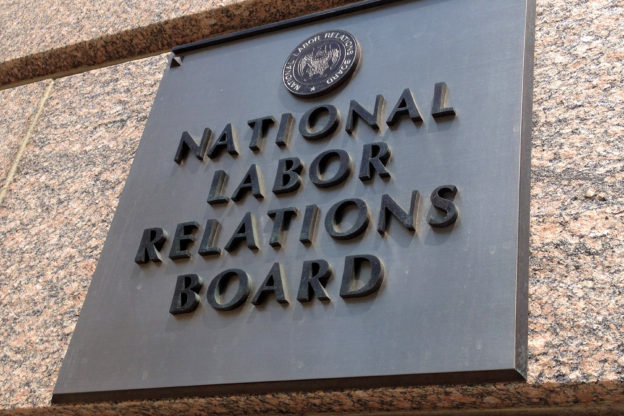By Steven Gutierrez

The National Labor Relations Board is charged with holding union elections whenever petitioners demonstrate that a sufficient number of employees in a particular workplace wish to become unionized. The NLRB’s “quickie election” rules have changed how this process plays out, and how employers should respond.
Slow Start to “Quickie Election” Rules
Seems like 2011 was a long time ago. That was when the National Labor Relations Board (NLRB) first proposed and implemented sweeping new rules designed to speed up the union election process. Business groups, including the U.S. Chamber of Commerce and others, sought to enjoin implementation of what became known as the “quickie election” rules by suing the NLRB in federal district court in Washington, D.C. Just two weeks after the rules became effective, a judge in that case invalidated the rules, finding that the Board had lacked a three-member quorum needed to adopt the rules. But the issue did not die there.
In his 2012 ruling, the district court judge noted that “nothing appear[ed] to prevent a properly constituted quorum of the Board from voting to adopt the rule if it has the desire to do so.” That statement proved prophetic as the NLRB then re-proposed the very same rules through a properly constituted quorum consisting of then-Board Chairman Mark Gaston Pearce and Board Members Kent Y. Hirozawa and Nancy Schiffer. The quorum voted to reissue the previously proposed rules despite widespread discontent amongst the business community.
“Quickie Election” Rules Speed Union Election Process
The re-proposed rules, which became effective on April 14, 2015, allowed unions to organize at an accelerated pace. The NLRB’s stated objective behind the rules was to simplify union election procedures by reducing the amount of time between the filing of a representation petition and a union election. That period was reduced from an average of six weeks under the former rules, to an average of just 21 to 23 days under the new rules.
Provisions under the new “quickie election” rules also kept pressure upon employers by requiring them to, within seven days of the filing of a representation petition, (1) submit a position statement addressing all bargaining unit issues, and (2) provide information on all potential voters in the election. The new rules further required employers to defer critical election issues—such as questions regarding supervisory status (since supervisors cannot be included in bargaining units under the National Labor Relations Act)—until after the union election was held. The compressed timeframes provided in the new rules also pressured employers into making early critical decisions on how to address representation petitions, and to produce voter information within tight deadlines. The shortened deadlines additionally stymied employers’ ability to effectively communicate with employees about the desirability of a unionized workplace prior to a union election.
Highlights of the new “quickie elections” rules included:
- A union could file its representation petition electronically, rather than in person or through regular U.S. mail.
- A hearing could be held within seven days of the union’s filing of its petition.
- Employers were required to provide a comprehensive “statement of position” on the union’s representation petition in advance of the hearing, and any issues not raised in the employer’s position statement were waived.
- The pre-election hearing would only determine whether a question concerning representation existed; conversely, issues related to individual voter eligibility could be deferred to post-election procedures.
- The parties’ right to file post-hearing briefs became discretionary and was only allowed at the hearing officer’s discretion.
- The deadline for employers to provide voter eligibility lists was shortened from seven workdays to just two workdays after the issuance of the “Direction of Election.”
- Employers were required to provide email addresses and telephone numbers for employees eligible to vote in the union election (in addition to their names and home addresses, as previously required).
- The election was no longer delayed until twenty-five days after the issuance of the “Direction of Election.”
- Pre-election appeals to the Board were eliminated, leaving only discretionary appeals of both pre- and post-election issues after the election occurred.
How Employers Responded to “Quickie Elections”
When the new rules became effective, most employers were advised to redouble training provided to their management teams. Front-line supervisors needed to be empowered to effectively communicate the company’s message to employees and to serve as the “eyes and ears” on the ground if a representation petition were filed. Front-line supervisors also needed to be able to identify and address potential workplace concerns before union support materialized.
Many employers were likewise advised to create rapid-reaction management teams which could quickly address any workplace concerns that may have driven employees to sign union authorization cards. These teams could also quickly assess any bargaining units proposed in a representation petition, and quickly determine whether certain employees—such as supervisors—needed to be excluded from the proposed units. This and other information was critical to helping legal counsel quickly determine whether a position statement would be needed after a representation petition was filed, as employers only had eight days from a petition’s filing to submit such a statement.
The proposed rapid-reaction management teams could also empower businesses with multiple locations to quickly determine whether an employer’s various locations were “integrated,” and whether employees in particular job classifications shared a “community of interest” with employees in other job classifications. That, in turn, was critical to determining the appropriateness of proposed bargaining units, including “micro-units,” before a union election was held. Again, all this information was critical to helping legal counsel quickly respond to representation petitions filed under the new “quickie election” rules.
Finally, many employers were advised to prepare in advance campaign materials relating to the desirability of unionized workplaces. These materials could be quickly rolled out to employees within the shortened timeframes permitted under the “quickie election” rules prior to an election. Aggressive anti-organizational campaign efforts were still possible under the new rules, but employers needed to act quickly to address the specific concerns which had animated the organizational efforts; employers could no longer waste time campaigning on side issues. Many employers were ultimately able to mount effective anti-organizational campaigns despite the new rules, but they often had fewer opportunities to present their positions to employees in captive meetings under the shortened deadlines.
The New Rules’ Impact on Union Elections
Given all the controversy surrounding the “quickie election” rules, what has been the practical impact on employers? Perhaps the biggest impact has been the reduction of litigation, both before and after union elections. NLRB statistics indicate that the new rules caused pre-election hearings to virtually cease, and also show that elections tended to be certified much sooner than under the old rules. This, in turn, suggested that post-litigation efforts to challenge election results also decreased dramatically.
As to election results, the “quickie election” rules did not result in a substantial increase in the number of representation petitions filed. The percentage of elections resulting in a union victory also increased just slightly over that in the prior period—to around 60%.
What’s Next for “Quickie Elections”?
As the old saying goes, elections have consequences. With the election of President Trump and changes to the NLRB’s membership, the “quickie election” rules’ tortured history has now come full circle. In December 2017, the Board published a Request for Information (RFI) asking for public input on the new “quickie election” rules. In particular, the Board sought public input on whether the new rules should be retained, changed, or rescinded. The original deadline for submissions was in early 2018, but the deadline was extended several times throughout the year.
To date, the Board has taken no formal action on the input it solicited through its RFI in December 2017. But the Board’s request for this information shows that is not afraid to wade back into the fray concerning the highly polarizing “quickie election” rules. The Board has worked hard under the current administration to turn back the clock on many of the previous administration’s Board decisions. By issuing its RFI in December 2017, the Board strongly suggested that changes to the “quickie election” rules might be next. 2019 could be the year.

